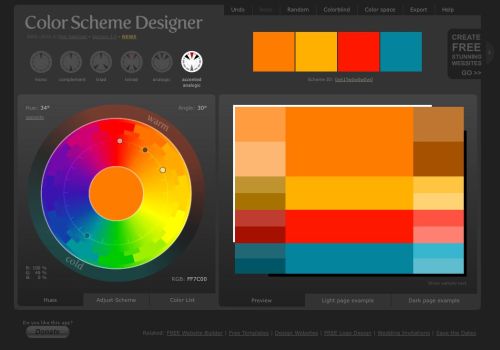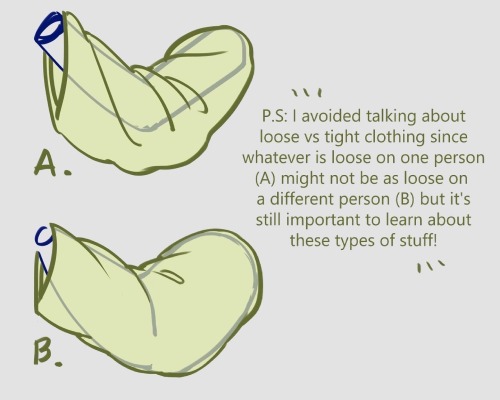Curate, connect, and discover
Art Tutorial - Blog Posts
Rebloging so I don’t forget

Just in case you forget this exists.
It exists.
goombella123 asked: how 2 force myself to study so i can get better at anatomy and posing
pearbuddy asked: developing a steady practice? i know the best advice to getting better is to just draw, but i know a lot of people (myself included) struggle with actually making ourselves do it.
cuccosneverdie asked: what kind of practice you did to get good at anatomy? i’m really struggling getting anatomy to look even slightly correct
whereislaurita asked about: Anatomy; ;
elinmeat asked about: FACES. .…. FACES. … .
With regards to anatomy, my favourite book is Figure Drawing: Design & Invention by michael hampton, and lots of tutorials and references in my anatomy tag: http://helpfulharrie.tumblr.com/tagged/anatomy !
Which is all well and good… but how do you actually practice these things?
“Just draw a whole bunch” is only about 15% of the story. In order to self study, you need to:
Identify what you are struggling with. Reflect on what it is about your art you do not like so you can improve upon it!
Figure out what direction it is you want to take your art in. How do you want your art to look? You can find a post I wrote about art direction a couple years ago here: http://helpfulharrie.tumblr.com/post/120523296471/alrighty-then-friends-lets-talk-about-art-styles
Once you identify what you are unsatisfied with, you can figure out what knowledge you are lacking and study it. Read tutorials, books, ask other artists and friends for guidance and critique, etc.!
Then you want to start applying what you have learnt to your art! You can only get so far by reading something, to truly understand it you have to put it into practice and get a feel for what you have learnt.
So lets say, for example, you want to study faces.
You’ll want to seek out some resources that will help you understand the subject, a good place to start would be my faces tag: http://helpfulharrie.tumblr.com/tagged/faces
But I’ll get you started with two resources that helped me the most!
One: Stan Prokopenko’s series on drawing the head at any angle:
It’s a great breakdown of the Loomis Method, a series of guidelines for the face and head created by andrew loomis.
Two: The book I mentioned earlier! It covers the whole figure and I recommend getting it if you can, I do believe there are pdfs out there if you can’t get the book.
But! You can see two of the pages on drawing the head here: http://helpfulharrie.tumblr.com/post/105040269221/from-figure-drawing-design-and-invention
Now you’ve learnt some New Stuff, and you need to put it into practice so you can process what you’ve been told.
So start finding some references! For faces/hands/feet/the human figure, I recommend visiting https://line-of-action.com/, it’s full of photos you can use.
With your references in and, start by tracing the guidelines over the image. This will help you understand what they represent, and why they’re there.

This is a good exercise for understanding anatomy in general, let’s say you instead wanted to study giraffes and have no idea how to draw them.
Look for the large, consistent shapes, and those will become your construction guidelines!

Once you’ve gotten a feel for your guidelines, try them out! Do a bunch of sketches from imagination.

And when you’re confident with them, try them out by drawing from references.

And finally, go back to your art from before you started these studies, I’m going to use something I drew in 2013

And redraw it using what you’ve learnt!

While you’re doing this, pay attention to the areas you got wrong. Make a note of this, so you don’t repeat it in the future.

Ah, much better!
Now repeat the process of: Identify problem, research problem, study problem, apply what you learnt, and you’ll improve for sure. It’ll take time, but the more you learn the closer your art will get to the image you want it to be!
In this post I focused on anatomy studies, but you can do the same thing with anything.
Like for example: colour studies, in that case you would:
read about colour theory
find some references full of colours you like, and colour pick out the palette
analyse the relationships btwn the colours based on what you read. What kind of colour scheme is this? how are these colours influencing the mood? etc.
then take an old piece and redo the colour scheme, making note of why you were dissatisfied with the old colours.
The most important part of this is that you experiment with what you’re reading about and being taught, and then going back and seeing where it was lacking in your work before so you can apply it to your work in the future!
Best of luck everyone! I hope that helps nwn
You can always ask me for pointers if you need, and remember! Take pride in what you create, everything you do is a work of art.
It’s easy to get caught up in the cycle of improve, improve, improve - but don’t forget to appreciate how far you’ve come.
Lastly, if this was helpful to you, you can support me on Patreon, Liberapay, or Ko-Fi so I can keep writing these posts! Thank you 💕








A guide to designing wheelchair using characters!
I hope this helps anyone who's trying to design their oc using a wheelchair, it's not a complete guide but I tried my best! deffo do more research if you're writing them as a character
I forgot I have to be active here so here’s my Twitter tutorial on how to draw folds I made a while back to help a friend!








hii! i hope your okay and doing well! ^.^ if you don’t mind, how do you render hair and skin so smooth????? it looks so yummy
Hello!!! I'm doing good and I hope your day/night is just as good!! 🫶🏼🫶🏼 Sorry it took so long but I made a tutorial for both and I really hope it's helpful 😭


Plus the brushes I used 🩷


